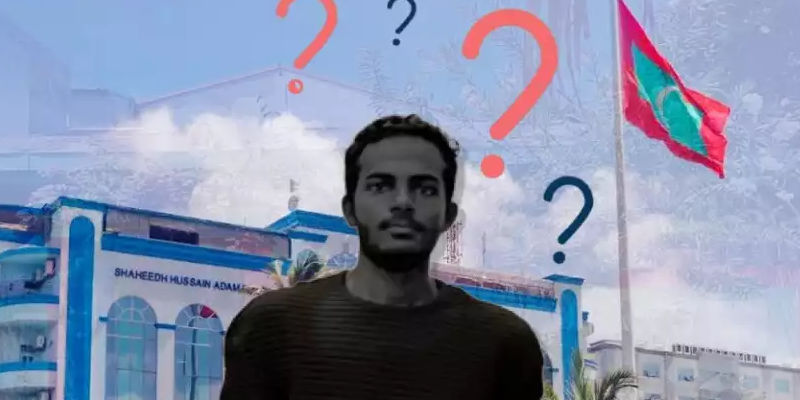The emergency trauma Former President and Speaker of Parliament Mohamed Nasheed had experienced was not in the norm even for trained and skilled doctors, doctors had to improvise to save his life.
The Maldives' first-ever democratically-elected president was targeted with an assassination attempt on Thursday evening, as he was heading out to attend an event in an island. The attack, which saw a remote-controlled IED explode near his residence in the center of Malé City, caused serious injuries to the ex-president who was rushed to the hospital within seven minutes after being knocked to the ground by the blast, which was dubbed far more powerful than the explosion in Sultan Park, 2007.
ADK Hospital held a press conference on Saturday with a team of first responders to treat the injured former president updating the public regarding his status.
Doctors revealed that Nasheed was conscious and responding to questions when he was brought to the hospital on the night of the IED blast, adding that he was bleeding heavily due to which he was rushed to the operation theater immediately. His airway was cleaned and he was put on incubator in preparation for surgery.
Doctors had initially attended to his flesh wounds after which a CT scan was conducted as well as a full body screening which showed several metal pieces lodged inside his body, asides from external wounds and doctors had also discovered pieces of plastic inside his body.
The team had immediately given high priority to remove the shrapnel lodged in Nasheed’s lung, which had missed his heart by just one centimeter. Doctors had discovered an exit wound where the shrapnel shattered the ex-president’s ribs and was removed from the other side.
Doctors were able to control his bleeding and attend his lung injury, which was followed by a procedure on his stomach and abdominal area where three pieces of metal were wedged in his gut. The pieces were large enough to show up in a CT scan, said the doctors. Although doctors were initially unable to local shrapnel in Nasheed's stomach, it was eventually found near his liver after doctors conducted an echo to locate the loose piece of shrapnel.
Further doctors discovered puncture wounds on his stomach with 600 - 700ml of blood accumulated inside. There were four puncture wounds, similar to which Nasheed experience liver trauma. As such, a piece of razor was scanned and removed from his liver. After removing the metal shards and shrapnel from the ex-president's limbs after his gut surgery, he was taken in for another CT scan. The former president also had metal pieces removed from his elbow, thigh and knee-cap. Most of the shrapnel was detected on the left side of the speaker's body. Although there were no exit wounds on his thigh from the shrapnel, doctors found shrapnel wedged into the bone around his knee and elbow. The team also discovered other foreign objects wedged inside Nasheed's body.
The doctors revealed that Nasheed attained seven more injuries near his chest which did not pose any dangers to his life.
Further, the latter CT scan showed a piece of shrapnel lodged in the ex-president's skull. The metal was stuck in the skin of his scalp and therefore had not reached his skull or brain.
An experienced cardiologist from Indira Gandhi Memorial Hospital (IGMH) was also part of the team of doctors that attended to the former president who was moved to the Critical Care Unit in ADK Hospital after 16 hours of successful surgeries. He was put on ventilator support and remained unconscious until his vitals had stabilized. He was taken off of life support on Saturday morning and could breathe on his own. Family members have confirmed that Nasheed said he is “good” and that he will return stronger.
While Nasheed is on a long road to recovery, doctors have expressed concerns over a great risk of infection due to his internal injuries, due to which his condition will be monitored closely.
Nasheed's family has since confirmed that efforts are currently underway to transport the ex-president abroad for further treatment after discussions with doctors who are yet to give the green light after further evaluations.



